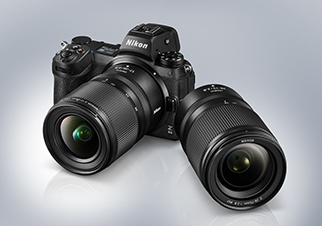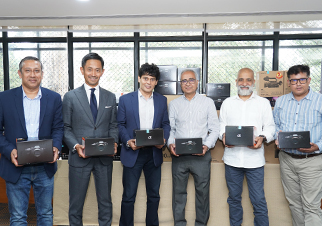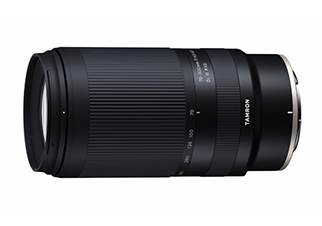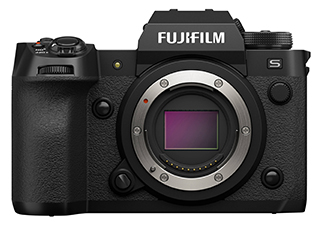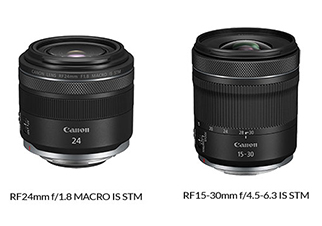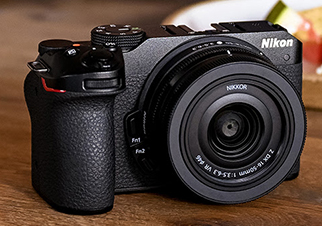It’s September and every iPhone user or even photographers look forward to this launch. In the iPhone presentation, Apple stated that this is the best phone they’ve developed yet. Of course they are suppose to say that.
But the bigger question is ‘Is this the best iPhone camera for me?’ and whether you should upgrade from an earlier iPhone or from an Android smartphone? So we’ve been testing the 14 Pro Max for some time now and there’s a lot to say about its camera. So do read the full article to know if it’s really worth to upgrade or no?
iPhone 14 Pro Max price starts at ₹1,39,900 and goes up all the way to the ₹1,89,900 price for the 1TB. We have reviewed the silver colour which is the top of the line edition and as you know the silver colour ideally looks pretty white.
Look, Body and Feel
When it comes to look, body and feel, the phone look and feels really premium and if you’ve been using a lot of the iPhone in the past few years then you would surely know what I am talking about.
But let’s dive into the cameras on the 14 Pro Max and these are also relevant to the 14 Pro as well since they share the same camera set up. Also there is already a new update that came to the iOS 16 and it has already been updated on this device before reviewing.
Camera Specs
At the back you have the familiar look of the 3-camera set up like the 13 pro max that we have become so familiar with. But what’s noticeable and different now is that the camera bumps have become much bigger and protrude out more than before, and they will make it unstable on the desk, especially when you tap it from the top left while using it.
But while the cameras look the same, inside you now have a new 48-megapixel quad sensor camera along with the new 12-megapixel ultra-wide camera and the 12-megapixel telephoto camera with 3x zoom.
48-Megapixel Main Camera
ProRAW:
Now what’s very important to you is that not only is the megapixels have increased but the pixel size has also increased to 2.44 qm now, which means each pixel will let in more light for possibly an improved and sharper image in both daylight as well as lowlight conditions.
And since the Max allows you to shoot 10-bit RAW with this bigger sensor the images it captures does tend to have more details. And the good thing is that it not only allows you to shoot at 1x, but also at all the available options up to 3x. But one thing that you have to note though is that while using macro, night mode or activating flash the images will be shoot at 12-megapixel, which means that the camera is using the centre 12-megapixel part of the sensor.
At 1X
At 2X
At 3X
The average file size of the images that we shot in RAW was about 55 MB and as you get closer on zoom it switches to the 12-megapixel with images at 2x and 3x for about 24 MB and 31 MB. Which is a decent size, it isn’t overly large and with a 1 TB space, you’ll never run out of that atleast.
Also note that when shooting on ProRAW the Live photos won’t work when ProRAW mode is on though.
Regular Mode:
When shooting in the regular mode the camera delivers despite everything that you throw at it honestly. The focussing is very fast and accurate and the output is really crisp, sharp and the details are also very good even on zooming in. What we liked about the phone is that it is also able to accurately deliver true to scene images without overcompensating which many phones tend to do overall using AI algorithms.
Also what we really liked is the performance that the combination of this hardware and software delivers now. At one end you have the improved cameras and on the other, the iOS 16 really improves upon the experience with features like Copy edits – that allows you to paste edits to images to make life really easy.
We are impressed with is the performance of the phone when clicked against a backlit environment as well. The phone does capture the subject well although it does add a slight red tinge to the image.
Low Light Performance:
With the new sensor combined with the bigger pixels, the lowlight performance of the 14 Pro Max is great. It is able to focus on the highlighted area of choosing fast and captures great details.
We’ve taken 2 images of the table, one under the normal ambient lighting and the other by bringing the aperture down to create a mood. Under both the scenarios the images have come sharp and display great detail, which has been highlighted in the box.
Distortion and Macro:
But when you are shooting with the Pro Max using the wide camera, you will find some level of distortion and unlike the OnePlus 10 Pro, it doesn’t have distortion compensation.
Macro
Also another thing to note is that by default the macro mode isn’t on in the Pro Max which might make you feel that it doesn’t have one. So you need to put it on from the camera settings.
In terms of the images since the phone doesn’t really feature a macro lens at best we would say its performance is average as you can see when zoomed in the images do loose its sharpness.
Portrait Mode
Undeniably one of the most widely used feature in the iPhone camera is the Portrait mode and honestly for the 14 Pro Max as well it does what you expect it to do. But one thing we are disappointed with is the edge detection sometimes. While it works well in delivering the images with beautiful depth, sometimes we find the edge detection slightly off with the phone blurring some portion off. But we are sure that this will improve with software updates.
At 1X
At 2X
At 3X
Low Light Portrait
Front Camera
The front camera has seen an update with the 14 pro series and it now features auto focus tracking. The tracking does work well and why this is important is since many users use these phones to vlog etc. And the phone does track the subjects very well as you can see.
In terms of the images the images are pretty good as you can see from the samples. Again one of the strengths of the iPhone has always been to deliver the images true to the scene which is very important for the photographer. Once again you can shoot in the RAW mode here as well and it will use the 12-megapixel image and give out a 25MB file and drop down to 7-megapixel when you zoom in for a 14MB file.
Video Performance
Videos have really been one of the strongest points of the iPhones over the years and with this Apple has just made it better. Of course you now have the option of shooting 4k at 24 fps as well and the introduction of the new Action mode as well. And as usual the iPhone doesn’t disappoint and delivers great video output with nice saturation and sharpness. The autofocus tracking is really fast both in the front as well as back cameras. But the phone does heat ever so slightly when used in 4K but should get better with software updates.
Now there is a noticeable shutter roll but that’s honestly nit-picking since it uses so much AI to do things and it will be there on any phone.
Action Mode
The action mode honestly is really empowering and if you have the creativity to shoot with it then it will really give you some good output. We took some shot using the action mode and even with as basic as this you can see the difference. But the resolution in the action mode can only go upto 2.8k since it might be using the more central part of the sensor to shoot this. And this is pretty common for most small sensors so it isn’t a surprise.
Cinematic Mode
In the cinematic mode when shooting videos, the phone only allows 30 fps in HD and 24 fps and 30 fps in 4k mode. And you can only use the 1x and 3x zoom for the same. The sample output is pretty good and looks good as usual. But we are not sure how many people will really use the cinematic mode to shoot regularly, may be to make reels etc.?
Battery
So a lot of iPhone photographers and users consider battery performance as a crucial part before buying the phone. And this is important as well if you shoot a lot of videos like us using 4k. In our use of the phone we would end up with 30-40% at the end of the day, which was pretty impressive
Conclusion
So how are the cameras of the iPhone 14 Pro Max? To be honest it is really difficult to beat this by any other camera in the market currently. The output in stills is really great and the combination of that hardware and software just make the overall experience of using this really good. Yes, the macro and distortion performance can be better and also the Samsung does offer high level of zoom. But honestly, we are not sure if an average user might even notice these things or use these features very often.
When it comes to video the iPhone has been ruling the roost for a while now and with this edition it might’ve widened that lead even further. So if you deep pockets and are looking for the best that Apple has to offer, then this is surely the phone for you.

